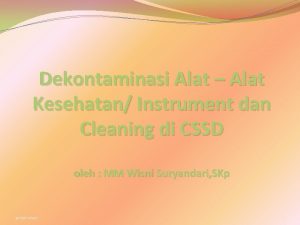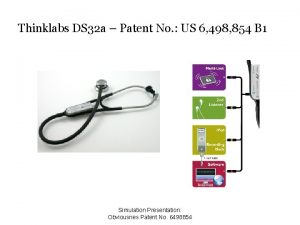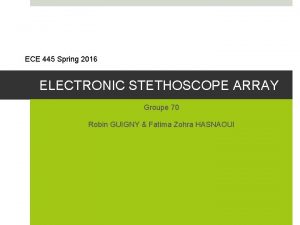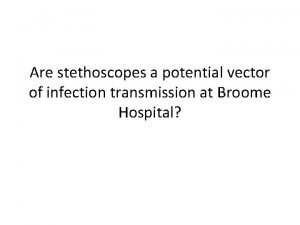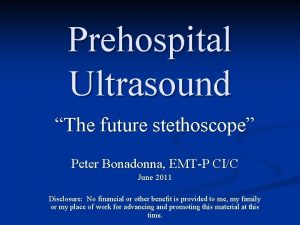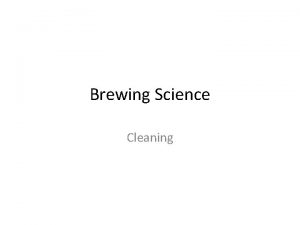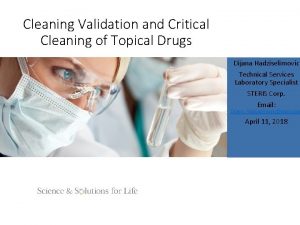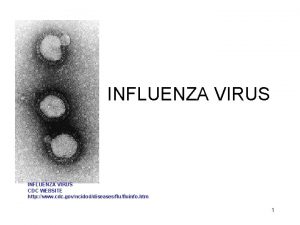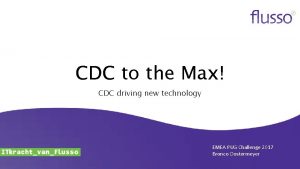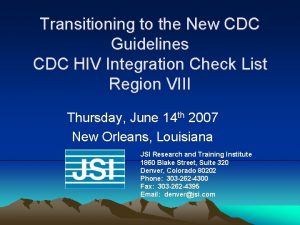Stethoscope Cleaning CDC Non critical each patient or








- Slides: 8

Stethoscope Cleaning CDC: • Non critical - each patient or once daily or once weekly • Semicritical – disinfected before patient use

Study design Units: • Emergency department (ED) • Surgical Intensive Care Unit ( SICU) • Labor and Delivery ( L and D) Interaction: • Semi critical - open thoracic or abdominal wound; surgery • Non critical Study subjects: Attending physicians, fellows and residents RNs, PAs, medical students and other medical personnel

Data recorded • Practitioner category • Location • Trauma status • Presence of precaution • Hand Hygiene • Stethoscope disinfection before and after encounter • Methods of disinfection

Results • 72/400 = 18% encounters • • • 8/72 (2%) – before encounter 65/72 (16%) – after 1 encounter – before and after encounter on non critical 15/288 – non critical interaction 57 /112 – semi critical , no stethoscope disinfected before encounter, but inspected after encounter • Residents – highest disinfection rate (greatest exposure to body fluids) • Physicians • RNs

Discussions: Hand Hygiene: • Less then half of encounters • 82% worn gloves • 8. 5% encounters – neither cleaned or gloved • 6. 8% - CDC compliant Stethoscopes disinfection: • Inconvenient • Not a priority

Strengths and Limitation • Study Design Strengths: • Blinded design - Staff being observed often did not know about study - A few staff knew they were being observed but did not know why; most did not know they were being watched • No recall bias; not based on self-report, unlike most other studies on this topic • Studied staff practice in three distinct clinical areas of varying intensity of service • Used Spaulding criteria to help define appropriate practice • Study Limitations • • • Observers could not often see if a stethoscope actually touched non-intact skin in “semi-critical”patients Could not see if stethoscopes were contaminated by handling after cleaning Could not see if “non-critical” stethoscopes were cleaned at other times (thus complaint with “daily” or “weekly” cleaning) Not mentioned limitation – study did not state existing facility policy Not mentioned limitation – study did not state how they chose to designate some patients as semi-critical and others as noncritical (e. g. , presence of open wound where stethoscope would be used)

Conclusion • Stethoscope disinfection must not continue to be overlooked, especially in acute care interactions, in the open wounds near auscultation.




